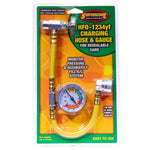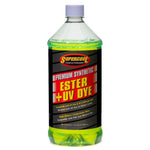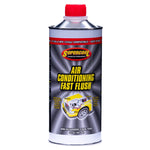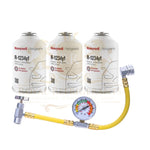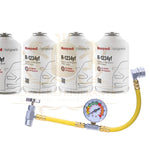You have no items in your shopping cart.
Everything You Need to Know About Freon for Cars and HVAC Applications
Whether you drive a car on a hot summer day or rely on your home air conditioner for comfort, Freon plays a vital role in keeping things cool. But what exactly is Freon, and how does it work in cars and HVAC systems? In this blog, we’ll cover everything you need to know — from types of Freon and how it functions, to environmental concerns and maintenance tips.
What is Freon?
Freon is a brand name for refrigerants — chemical compounds used in air conditioning (AC) and refrigeration systems to absorb and release heat. Originally developed by DuPont, Freon became synonymous with cooling agents, especially R-12, R-22, and R-134a.
Over the years, newer, more eco-friendly refrigerants have replaced older Freon types due to environmental regulations.
How Does Freon Work in Cars and HVAC Systems?
The working principle is quite simple yet fascinating.
Freon cycles through your AC system in a closed loop, changing from a liquid to a gas and back again to absorb heat from the air.
-
Compression: The compressor pressurizes the Freon gas.
-
Condensation: It cools down into a liquid in the condenser.
-
Expansion: The expansion valve releases pressure, cooling the Freon.
-
Evaporation: The cooled Freon absorbs heat from cabin or indoor air — giving you the refreshing cool air you enjoy.
Types of Freon and Refrigerants Used Today
| Application | Common Type | Notes |
|---|---|---|
| Older Car AC Systems | R-12 (Freon-12) | Banned due to ozone depletion |
| Modern Cars | R-134a | Widely used until mid-2010s |
| Newer Cars | R-1234yf | Eco-friendly, low Global Warming Potential (GWP) |
| Home HVAC (Old Units) | R-22 (Freon-22) | Phased out globally |
| Home HVAC (Modern Units) | R-410A, R-32 | More efficient and ozone-safe |
Freon for Cars: What You Should Know
Low Refrigerant Signs:
Weak or warm AC airflow
Clicking noises from the compressor
Visible refrigerant leaks (oily residue)
Recharging Car AC:
Always use the correct type of refrigerant for your car model. Mixing refrigerants can damage the system.
If you’re unsure, have a professional AC technician handle the recharge.
Environmental Regulations:
The U.S. EPA and other global agencies have restricted older Freon types due to ozone depletion and global warming effects. Always choose eco-friendly alternatives.

Freon in HVAC Systems
In home or commercial HVAC systems:
-
Freon circulates between indoor and outdoor coils to transfer heat.
-
Regular maintenance ensures optimal cooling performance and prevents leaks.
-
Systems using R-22 are now outdated and must be retrofitted or replaced.
Safety and Environmental Concerns
Freon leaks are harmful to:
-
The environment — damaging the ozone layer and contributing to climate change.
-
Your health — in enclosed spaces, leaks can cause dizziness or breathing issues.
Tip: Always have suspected leaks inspected by certified technicians.
Freon Alternatives and the Future of Cooling
Modern cooling systems are moving toward eco-friendly refrigerants:
-
R-1234yf (automotive)
-
R-410A, R-32, R-454B (HVAC)
-
CO₂ (R-744) and hydrocarbon-based refrigerants in specialized systems.
These replacements are more energy-efficient and have lower environmental impact — marking the future of sustainable cooling.
Conclusion
Freon has been the backbone of air conditioning for decades — both in cars and HVAC systems. However, with technological advancements and environmental awareness, newer refrigerants are taking over.
Whether you’re topping up your car’s AC or upgrading your home cooling system, understanding Freon helps you make smarter, safer, and greener choices.
 English
English

